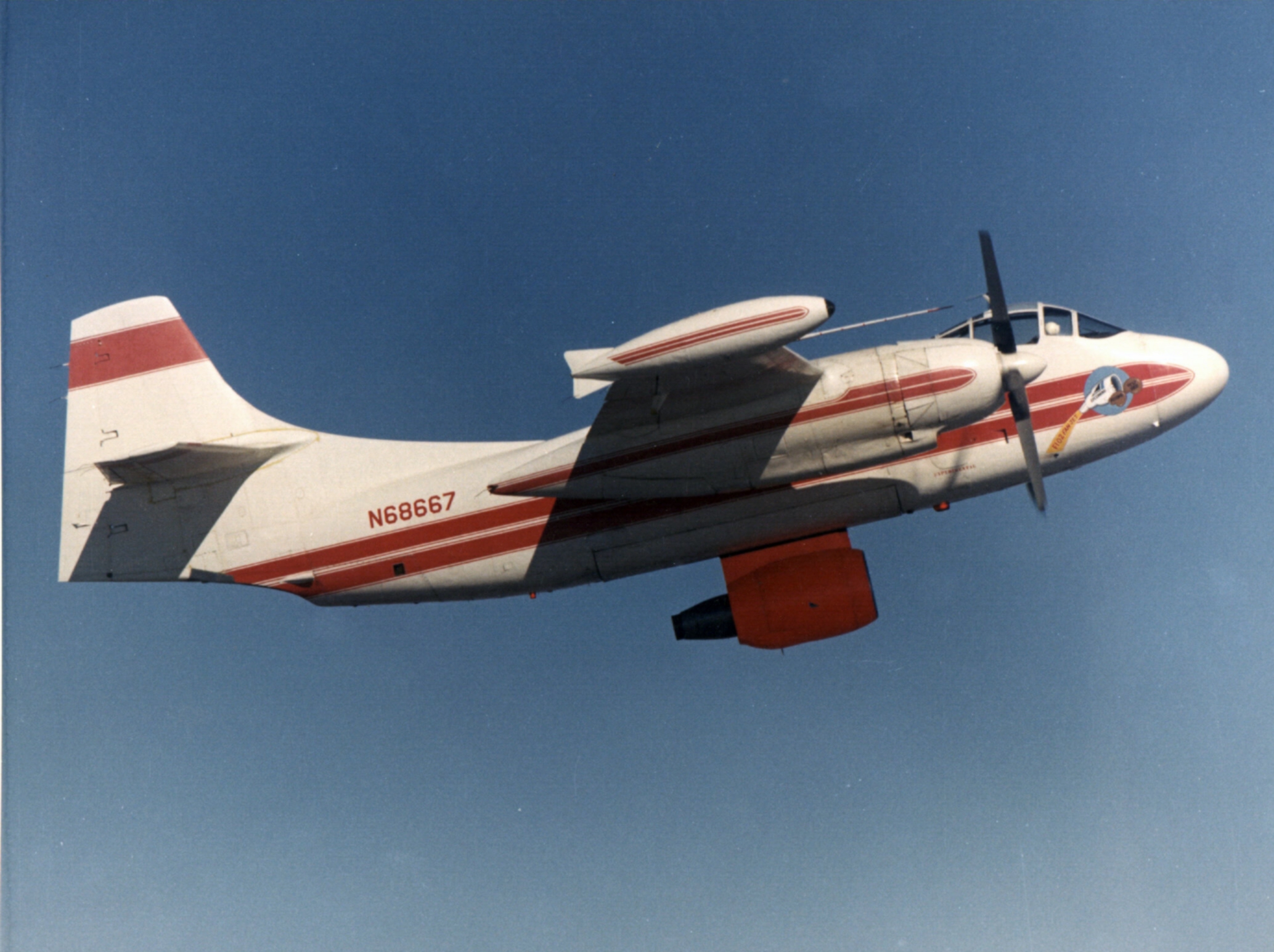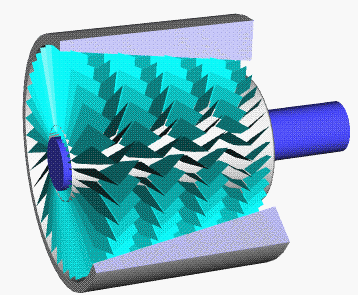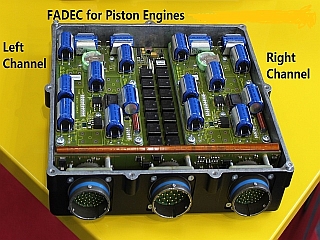|
Lycoming ALF 502
The Lycoming ALF 502/LF 507 (later Honeywell ALF 502/LF 507) is a geared turbofan Aircraft engine, engine produced by Lycoming Engines, AlliedSignal, and Honeywell Aerospace. The U.S. military designation for the ALF 502 is YF102. Development In mid-1970, Avco Lycoming was advertising two Lycoming T55-derived engines, an LTC4B-12 turboprop and an ALF 502A turbofan, as possible powerplants for the U.S. Air Force's A-X close air support aircraft program. Northrop Corporation signed a contract with Avco Lycoming to use the ALF 502A for its entry into the A-X competition, the Northrop YA-9, in January 1971. The engine was given a United States military aircraft engine designation of YF102-LD-100. Six YF102 engines were built for the YA-9. The thrust engines powered the A-9A prototypes for seven months of flight tests in 1972, recording 238 flights and 652 flight hours. These engines were later reused in the C-8A Quiet Short-Haul Research Aircraft (QSRA). The commercial ALF 502D e ... [...More Info...] [...Related Items...] OR: [Wikipedia] [Google] [Baidu] |
Geared Turbofan
The geared turbofan is a type of turbofan aircraft engine with a planetary gearbox between the low pressure compressor / turbine and the fan, enabling each to spin at its optimum speed. The benefit of the design is lower fuel consumption and much quieter operation. The drawback is that it increases weight and adds complexity. Technology In a conventional turbofan, a single shaft (the "low-pressure" or LP shaft) connects the fan, the low-pressure compressor and the low-pressure turbine (a second concentric shaft connects the high-pressure compressor and high-pressure turbine). In this configuration, the maximum tip speed for the larger radius fan limits the rotational speed for the LP shaft and thus the LP compressor and turbine. At high bypass ratios (and thus also high radius ratios) the rotational speed of the LP turbine and compressor must be relatively low, which means extra compressor and turbine stages are required to keep the average stage loadings and, therefore, overa ... [...More Info...] [...Related Items...] OR: [Wikipedia] [Google] [Baidu] |
C-8A Quiet Short-Haul Research Aircraft
The de Havilland Canada DHC-5 Buffalo is a short takeoff and landing (STOL) utility transport turboprop aircraft developed from the earlier piston-powered DHC-4 Caribou. The aircraft has extraordinary STOL performance and is able to take off in distances much shorter than even most light aircraft can manage. Design and development The Buffalo arose from a 1962 United States Army requirement for a STOL transport capable of carrying the same payload as the CH-47A Chinook helicopter.''Air International'' August 1976, p. 59. De Havilland Canada based its design to meet the requirement on an enlarged version of its DHC-4 Caribou, already in large-scale service with the United States Army, to be powered by General Electric T64 turboprops rather than the Pratt & Whitney R-2000 piston engines of the Caribou. (It had already flown a T64-powered Caribou on 22 September 1961). De Havilland's design, the DHC-5 Buffalo, was chosen as the winner of the United States Army competition in ... [...More Info...] [...Related Items...] OR: [Wikipedia] [Google] [Baidu] |
Impeller
An impeller, or impellor, is a driven rotor used to increase the pressure and flow of a fluid. It is the opposite of a turbine, which extracts energy from, and reduces the pressure of, a flowing fluid. Strictly speaking, propellers are a sub-class of impellers where the flow both enters and leaves axially, but in many contexts the term "impeller" is reserved for ''non''-propeller rotors where the flow enters axially and leaves radially, especially when creating suction in a pump or compressor. In pumps An impeller is a rotating component of a centrifugal pump that accelerates fluid outward from the center of rotation, thus transferring energy from the motor that drives the pump to the fluid being pumped. The acceleration generates output pressure when the outward movement of the fluid is confined by the pump casing. An impeller is usually a short cylinder with an open inlet (called an eye) to accept incoming fluid, vanes to push the fluid radially, and a splined, keyed, or ... [...More Info...] [...Related Items...] OR: [Wikipedia] [Google] [Baidu] |
Axial Compressor
An axial compressor is a gas compressor that can continuously pressurize gases. It is a rotating, airfoil-based compressor in which the gas or working fluid principally flows parallel to the axis of rotation, or axially. This differs from other rotating compressors such as centrifugal compressor, axi-centrifugal compressors and mixed-flow compressors where the fluid flow will include a "radial component" through the compressor. The energy level of the fluid increases as it flows through the compressor due to the action of the rotor blades which exert a torque on the fluid. The stationary blades slow the fluid, converting the circumferential component of flow into pressure. Compressors are typically driven by an electric motor or a steam or a gas turbine. Axial flow compressors produce a continuous flow of compressed gas, and have the benefits of high efficiency and large mass flow rate, particularly in relation to their size and cross-section. They do, however, require several ... [...More Info...] [...Related Items...] OR: [Wikipedia] [Google] [Baidu] |
Composite Materials
A composite or composite material (also composition material) is a material which is produced from two or more constituent materials. These constituent materials have notably dissimilar chemical or physical properties and are merged to create a material with properties unlike the individual elements. Within the finished structure, the individual elements remain separate and distinct, distinguishing composites from mixtures and solid solutions. Composite materials with more than one distinct layer are called ''composite laminates''. Typical engineered composite materials are made up of a binding agent forming the ''matrix'' and a Filler (materials), filler material (particulates or fibres) giving ''substance'', e.g.: * Concrete, reinforced concrete and masonry with cement, lime or Mortar (masonry), mortar (which is itself a composite material) as a binder * Composite wood such as glulam and plywood with wood glue as a binder * Reinforced plastics, such as fiberglass and fibre-rein ... [...More Info...] [...Related Items...] OR: [Wikipedia] [Google] [Baidu] |
Turbine
A turbine ( or ) (from the Greek , ''tyrbē'', or Latin ''turbo'', meaning vortex) is a rotary mechanical device that extracts energy from a fluid flow and converts it into useful work. The work produced can be used for generating electrical power when combined with a generator.Munson, Bruce Roy, T. H. Okiishi, and Wade W. Huebsch. "Turbomachines." Fundamentals of Fluid Mechanics. 6th ed. Hoboken, NJ: J. Wiley & Sons, 2009. Print. A turbine is a turbomachine with at least one moving part called a rotor assembly, which is a shaft or drum with blades attached. Moving fluid acts on the blades so that they move and impart rotational energy to the rotor. Gas, steam, and water turbines have a casing around the blades that contains and controls the working fluid. Modern steam turbines frequently employ both reaction and impulse in the same unit, typically varying the degree of reaction and impulse from the blade root to its periphery. History Hero of Alexandria demonstrat ... [...More Info...] [...Related Items...] OR: [Wikipedia] [Google] [Baidu] |
Gearbox
A transmission (also called a gearbox) is a mechanical device invented by Louis Renault (who founded Renault) which uses a gear set—two or more gears working together—to change the speed, direction of rotation, or torque multiplication/reduction in a machine. Transmissions can have a single fixed-gear ratio, multiple distinct gear ratios, or continuously variable ratios. Variable-ratio transmissions are used in all sorts of machinery, especially vehicles. Applications Early uses Early transmissions included the right-angle drives and other gearing in windmills, horse-powered devices, and steam-powered devices. Applications of these devices included pumps, mills and hoists. Bicycles Bicycles traditionally have used hub gear or Derailleur gear transmissions, but there are other more recent design innovations. Automobiles Since the torque and power output of an internal combustion engine (ICE) varies with its rpm, automobiles powered by ICEs require multiple ... [...More Info...] [...Related Items...] OR: [Wikipedia] [Google] [Baidu] |
Thrust-specific Fuel Consumption
Thrust-specific fuel consumption (TSFC) is the fuel efficiency of an engine design with respect to thrust output. TSFC may also be thought of as fuel consumption (grams/second) per unit of thrust (newtons, or N), hence ''thrust-specific''. This figure is inversely proportional to specific impulse, which is the amount of thrust produced per unit fuel consumed. TSFC or SFC for thrust engines (e.g. turbojets, turbofans, ramjets, rockets, etc.) is the mass of fuel needed to provide the net thrust for a given period e.g. lb/(h·lbf) (pounds of fuel per hour-pound of thrust) or g/(s·kN) (grams of fuel per second-kilonewton). Mass of fuel is used, rather than volume (gallons or litres) for the fuel measure, since it is independent of temperature. Specific fuel consumption of air-breathing jet engines at their maximum efficiency is more or less proportional to exhaust speed. The fuel consumption ''per mile'' or ''per kilometre'' is a more appropriate comparison for aircraft that travel a ... [...More Info...] [...Related Items...] OR: [Wikipedia] [Google] [Baidu] |
NASA
The National Aeronautics and Space Administration (NASA ) is an independent agencies of the United States government, independent agency of the federal government of the United States, US federal government responsible for the United States's civil list of government space agencies, space program, aeronautics research and outer space, space research. National Aeronautics and Space Act, Established in 1958, it succeeded the National Advisory Committee for Aeronautics (NACA) to give the American space development effort a distinct civilian orientation, emphasizing peaceful applications in space science. It has since led most of America's space exploration programs, including Project Mercury, Project Gemini, the 1968–1972 Apollo program missions, the Skylab space station, and the Space Shuttle. Currently, NASA supports the International Space Station (ISS) along with the Commercial Crew Program and oversees the development of the Orion (spacecraft), Orion spacecraft and the Sp ... [...More Info...] [...Related Items...] OR: [Wikipedia] [Google] [Baidu] |
Aircraft Maintenance
Aircraft maintenance is the performance of tasks required to ensure the continuing airworthiness of an aircraft or aircraft part, including overhaul, inspection, replacement, defect rectification, and the embodiment of modifications, compliance with airworthiness directives and repair. Regulation The maintenance of aircraft is highly regulated, in order to ensure safe and correct functioning during flight. In civil aviation national regulations are coordinated under international standards, established by the International Civil Aviation Organization (ICAO). The ICAO standards have to be implemented by local airworthiness authorities to regulate the maintenance tasks, personnel and inspection system. Maintenance staff must be licensed for the tasks they carry out. Major airworthiness regulatory authorities include the US Federal Aviation Administration (FAA), European Union Aviation Safety Agency (EASA), Australian Transport Safety Bureau (ATSB), Transport Canada (TC) and I ... [...More Info...] [...Related Items...] OR: [Wikipedia] [Google] [Baidu] |
Flight International
''Flight International'', formerly ''Flight'', is a monthly magazine focused on aerospace. Published in the United Kingdom and founded in 1909 as "A Journal devoted to the Interests, Practice, and Progress of Aerial Locomotion and Transport", it is the world's oldest continuously published aviation news magazine. ''Flight International'' is published by DVV Media Group. Competitors include Jane's Information Group and '' Aviation Week''. Former editors of, and contributors include H. F. King, Bill Gunston, John W. R. Taylor and David Learmount. History The founder and first editor of ''Flight'' was Stanley Spooner. He was also the creator and editor of ''The Automotor Journal'', originally titled ''The Automotor Journal and Horseless Vehicle''.Guide To British Industrial His ... [...More Info...] [...Related Items...] OR: [Wikipedia] [Google] [Baidu] |
FADEC
A full authority digital engine (or electronics) control (FADEC) is a system consisting of a digital computer, called an "electronic engine controller" (EEC) or " engine control unit" (ECU), and its related accessories that control all aspects of aircraft engine performance. FADECs have been produced for both piston engines and jet engines. History The goal of any engine control system is to allow the engine to perform at maximum efficiency for a given condition. Originally, engine control systems consisted of simple mechanical linkages connected physically to the engine. By moving these levers the pilot or the flight engineer could control fuel flow, power output, and many other engine parameters. The mechanical/hydraulic engine control unit for Germany's BMW 801 piston aviation radial engine of World War II was just one notable example of this in its later stages of development. This mechanical engine control was progressively replaced first by analogue electronic engine cont ... [...More Info...] [...Related Items...] OR: [Wikipedia] [Google] [Baidu] |






